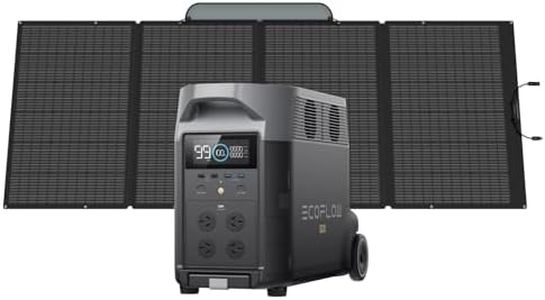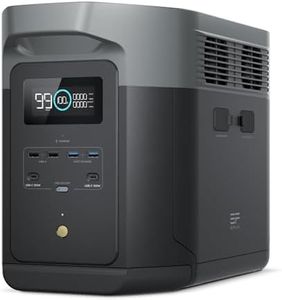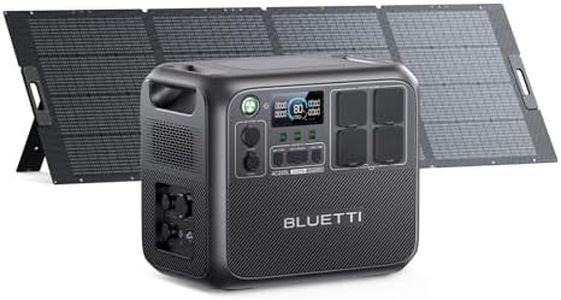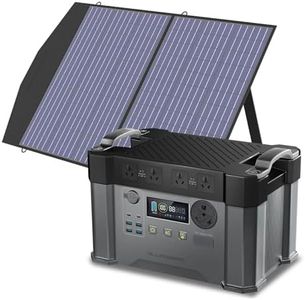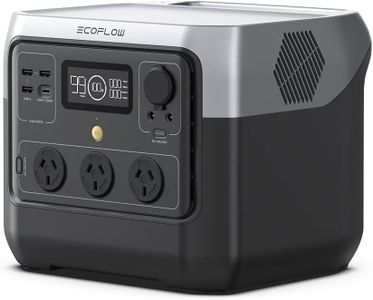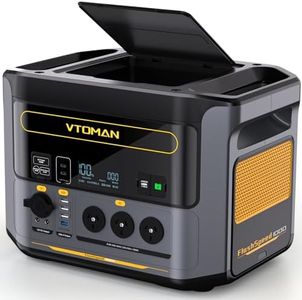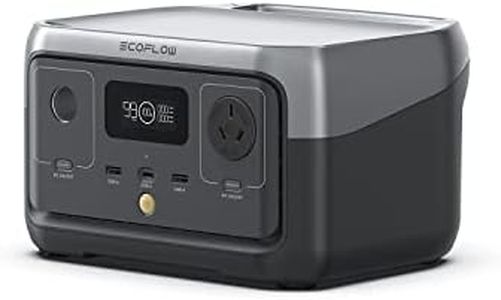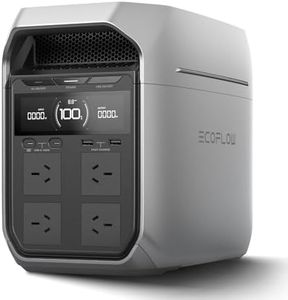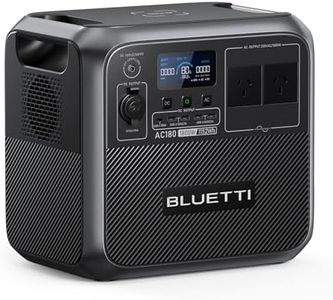We Use CookiesWe use cookies to enhance the security, performance,
functionality and for analytical and promotional activities. By continuing to browse this site you
are agreeing to our privacy policy
10 Best Solar Generators For Refrigerators
From leading brands and best sellers available on the web.Buying Guide for the Best Solar Generators For Refrigerators
Choosing a solar generator for running a refrigerator can feel overwhelming, but breaking down the essential features makes the process much clearer. The aim is to ensure your generator provides enough consistent power for your refrigerator while being efficient and reliable. Focus on understanding your refrigerator’s energy requirements and match them with the solar generator’s capabilities. Carefully check the specifications, as these will determine if the generator can handle the workload and suit your usage habits.Battery Capacity (Watt-hours or Wh)Battery capacity shows how much energy a solar generator can store and is expressed in watt-hours (Wh). This is crucial for refrigerators, as running them usually requires continuous power over many hours or even a whole day. Battery capacities can be broken into smaller (below 500Wh), medium (500-1000Wh), and large (above 1000Wh) segments. Smaller units may only run a small, energy-efficient fridge for a few hours, while medium ones might support an average home refrigerator for half a day. Larger capacities are better for full-size fridges or longer usage. To pick the right one, estimate your refrigerator’s daily consumption (usually in Wh or kWh), and choose a battery with some extra headroom to avoid frequent recharges.
Inverter Output (Continuous Watts)The inverter output tells you how much continuous power the solar generator can deliver at once, measured in watts (W). This matters because refrigerators have a minimum required wattage to run properly. Lower range generators (under 300W) won’t support most household fridges, while mid-range units (300-800W) might handle compact models. Larger inverters (800W and up) are best for standard fridges and even at times when the fridge ‘kicks in’ and draws extra power. Check your refrigerator’s running and start-up wattages, and pick a generator with an inverter rated safely above those numbers.
Solar Input CapacitySolar input capacity dictates how quickly a solar generator can recharge from solar panels, usually measured in watts. It’s important because a higher value means faster recharging, especially after running a refrigerator for several hours. Inputs below 100W are slow and suitable for very light usage, while 100-300W is moderate and fits average needs, and above 300W is fast, ideal for larger fridges or daily use. Choose based on how often you’ll rely on solar: for frequent or off-grid use, prioritize higher input capacity to minimize downtime.
Port Types and NumberPort types include AC outlets, DC ports, and sometimes USBs. For refrigerators, at least one standard AC outlet is necessary, and multiple ports let you run other devices simultaneously. Generators may offer only one AC port (limiting usage), two or three (allowing some flexibility), or many (best for multi-device users). Match the number and type of output ports to your needs—if you only run a fridge, one AC outlet may suffice, but for powering extra items, more is better.
Portability and WeightPortability refers to how easy it is to move the solar generator around, often linked directly to its weight and design. Small units (under 10kg) are easy to carry but generally have lower capacities. Mid-range weights (10-20kg) balance portability with power, while larger units (over 20kg) can be heavy but provide more consistent refrigerator support. Consider your intended use: if you need to move it often or use it in different locations, prioritize lighter, portable designs but don’t sacrifice needed capacity.
Battery ChemistryBattery chemistry refers to the type of battery inside the generator, commonly lithium-ion or lithium iron phosphate (LiFePO4). Lithium-ion batteries are lighter and more compact but can wear out quicker. LiFePO4 batteries are heavier, costlier, but last longer and are often considered safer. For occasional or mobile use, lithium-ion is good. For daily, heavy-duty, or long-term use, LiFePO4 offers more cycle life and reliability.
